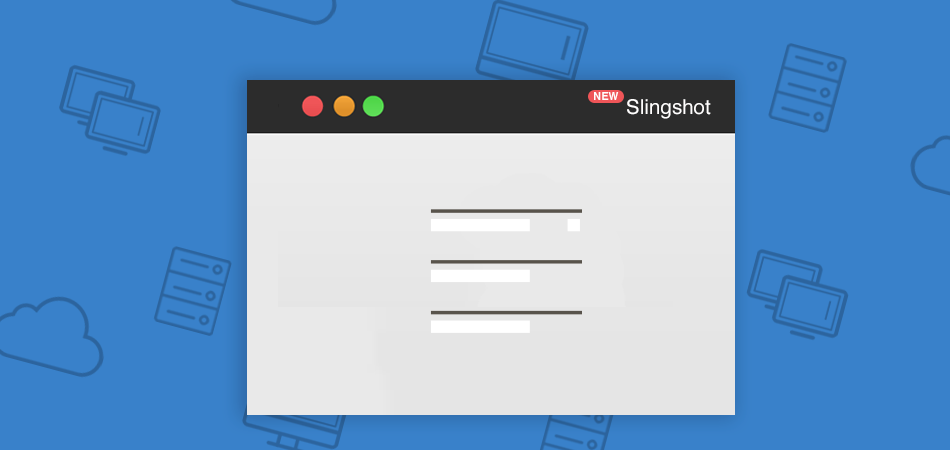We’ve been quietly working on a major project here at SNS, and we’re excited to finally pull back the curtain and show you what’s new!

Today we’re introducing Slingshot. It’s an automations GUI and API designed from the ground up to address today’s workflow challenges and give you more control over your post production operations.
With Slingshot, you can now create and run automated file workflows that span EVO, all sorts of other systems, and even cloud storage.
Slingshot boosts productivity by enabling you to automate repetitive file management tasks, leaving you and your team with more valuable time in post.
We’re giving you two ways to work with Slingshot. For users, Slingshot has an easy-to-use point and click “Task Builder” GUI in EVO’s web interface. For developers and integrators, we also now have a powerful API (application programming interface) that lets you build flexible integrations for a variety of applications.
It’s up to you whether you want to use the Task Builder, the API, or both. Basically, if you want easy-to-use, scheduled automations, use the Task Builder. If you need advanced, on-demand automations, use the API.
Send files to (almost) anywhere
Slingshot offers several paths for automatically transporting files from one place to another, such as:
- Single EVO: Use Slingshot to run scheduled tasks on files inside one EVO.
- EVO to other systems: Use Slingshot to transfer files from EVO to other kinds of servers, including FTP systems. (You can automate transports to just about any AFP, SMB/CIFS, or FTP system.)
- EVO to cloud: Use Slingshot to automatically send files to cloud storage like Amazon S3. (Other cloud storage providers coming in future versions.)
- EVO to EVO: Have multiple EVO systems transferring files among each other.
- Offload/transport engine: Use Slingshot to direct your transfers from a supported system to any other supported system, even if none of the files are on EVO. (API only)
Watch this short 3 minute video (below) to see the highlights of Slingshot.
What makes this unique?
Slingshot is embedded directly inside the EVO storage system. To get any kind of automation capability with most other storage systems you’d have to install third-party applications onto your workstations — that adds more complexity and is limited by the connection speed of the workstation. We’ve made automation a central function of the EVO storage server itself, right where your assets and projects already exist.
Most storage systems don’t give you even a fraction of the workflow tools we’ve built into EVO, like unlimited asset management software and enhanced integrations with Avid, Adobe, FCP X, and other creative applications. And now, with a powerful API and intuitive Task Builder, we’re making flexible, automated workflows a possibility for teams of all sizes.
You create automations by using Slingshot’s configurable “tasks,” which include things like copying, moving, deleting, transcoding, and emailing. Think of each task as a configurable step in your workflow. You can create scheduled automations that help eliminate some of the time currently wasted on administrative work. And, if you’re a developer, you can also create advanced, on-demand actions using the Slingshot API, which provides even more control over your workflow automations.
With Slingshot you can do things like:
- Set watched folders on EVO’s workspaces and perform actions on those files.
- Use file queries (like *.mp4 and *.m4v) to control the scope of each automation. (Advanced users may prefer to use regex — a sequence of characters that define a search pattern — which is also supported.)
- Perform automated transfers that don’t require a workstation.
Basic workflow examples
With a few clicks in the Task Builder, Slingshot can be made to do a wide range of automations. You can string tasks together to create countless variations of workflows, but here are some basic examples of time-saving automations you can run with Slingshot:
- Set a watched folder that moves any file in it (or only certain files) to an FTP system every hour.
- Schedule server-to-server transfers (so that you don’t have to “tie up” a workstation just for repetitive copying or moving files).
- Send files in a watched folder to cloud storage once per week at a certain time, such as “every Saturday at 1am.”
If you’re a developer, an advanced example would be to use the Slingshot API to transfer certain files, on-demand, to an external server or cloud storage provider. This means you could offload file transfer operations, and process them on an EVO server, instead of consuming resources on another appliance.
Want to try Slingshot?
Users… If you’d like to try Slingshot (or just have some questions about it) click the button below. (Slingshot requires EVO OS v.5.8.)
Product manufacturers, software developers, or systems integrators… If you’d like more information on using Slingshot’s RESTful JSON API please use the button above to contact us. Let us know how you’d like to use the API; we’d love to talk with you!
Summary
To quickly sum it up: Slingshot is our new automation and workflow system. It runs on your EVO. It has a point-and-click Task Builder for users, as well as an API for software developers. You can use Slingshot to create and run scheduled and on-demand file movements and transcodes. And, it works with EVO, cloud storage, and other storage systems.
We’re very excited about Slingshot — it’s a powerful new tool with massive potential for creative teams. We’ll be steadily releasing more info and documentation, and we’ll be demonstrating it in Las Vegas during NAB.
Follow @snstweets for more updates, and contact us anytime to schedule a personalized demo.
